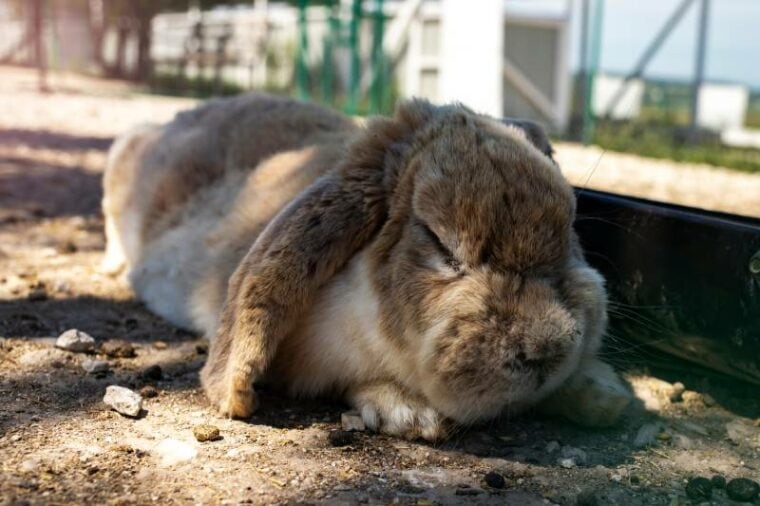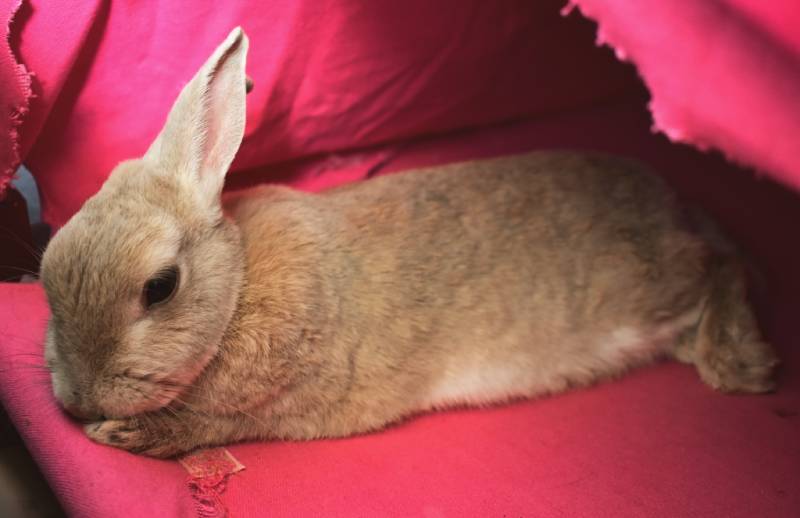
Rabbits make adorable pets, but getting used to their unique sleep style can take some getting used to. Rabbits often sleep on their stomachs or upright, but their sleep is light to stay alert if there are predators or other threats. They also sleep in frequent short naps rather than for a whole day or night.
Learn all you need to know about a rabbit’s sleep positions, sleep cycles, and other quirky behaviors.
Rabbit Sleeping Positions
Typically, sleeping rabbits lie on their stomachs with their back legs stretched out behind them or to the side. Some rabbits will sleep upright in a loaf position with their ears folded down on the side of their heads.
There are some other positions rabbits will use to sleep, however. In colder climates, they’ll sleep curled up in a ball, like a dog, to reduce surface area and conserve body heat. In hot climates, rabbits can sleep stretched out and further away from each other.

When Do Rabbits Sleep?
Rabbits sleep about eight to 12 hours a day but have different sleep cycles than humans. We tend to sleep six to nine hours a night and wake during the day, but rabbits take multiple naps throughout a 24-hour period.
This is because of the instinctual need to stay alert in case of predators. They tend to prefer the company of other rabbits as well because they can count on an alert from the group if there are threats.
They’re also crepuscular, which means they are most active during dawn and dusk. This can make them feel sleepy at various points in the day.
Where Do Rabbits Sleep?
In the wild, rabbits create tunnels in the ground, known as warren, that have places to sleep and nest. They create multiple entrances to escape quickly if there’s a threat. Sometimes, these warrens can be as deep as 10 feet underground.
In captivity, rabbits thrive when they have tunnels and darkened nesting areas that resemble these tunnels. You don’t need to dig a 10-foot hole in your floor, but providing a few varied nesting and tunnel spots will give your rabbit the security to get into a deep sleep.

Unique Sleep Cycles
Sleeping rabbits have some unique habits that can be hard to identify as a new owner. Your rabbit may look sound asleep, but they’ll wake instantly if there’s a threat. As a prey animal, this is an ingrained instinct from living in the wild—even if your rabbit was bred and born in captivity.
During this phase of sleep, your rabbit may breathe heavily, and their eyes may move around quickly. This is similar to our rapid eye movement (REM) sleep, which is when we dream, but the difference is that your rabbit can wake in an instant and be fully alert.
Sometimes, your rabbit may twitch or jerk during sleep, which is nothing to worry about. These are myoclonic movements. Atonic movements may also happen, which are more fluid and may cause your rabbit to look limp.
Final Thoughts
Rabbits can have some strange, silly, or downright alarming behaviors around sleep, but they’re usually nothing to worry about. As you observe your rabbit, you’ll begin to notice their unique sleep behaviors and patterns to understand when they’re resting or in a deep sleep.
Featured Image Credit: Renko Aleks, Shutterstock









